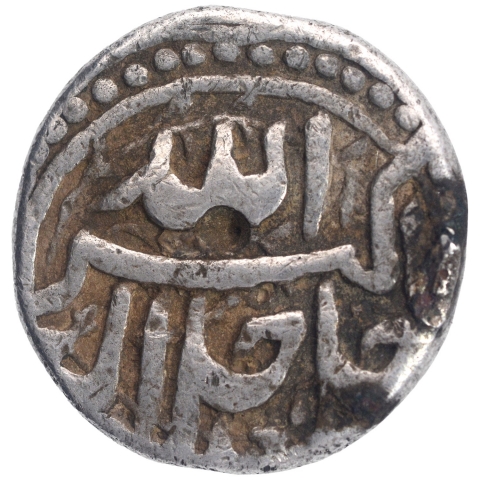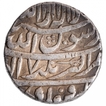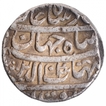This Lot is closed.
- P-Auction # 24
- Bids: 3
- Views:849
| Start Price 300000 | Estimated Price 300000-400000 |
| login, to view Hammer value | |
| Quick Description | ||||
|---|---|---|---|---|
| Denomination | Rupee 01 | Mint | Kabul | |
| Metal | Silver | RY (Ruling Year) | 45 RY | |
| Month (Akbar & Jahangir Coins) | 01. Farwardin | |||
| Full Description: Akbar, Kabul Mint, Silver Rupee, Elahi 45 RY, Month Farwardin, Obv: jalla jalalahu allahu akbar, Rev: elahi month farwardin on top and elahi date 45, mint kabul at bottom, 11.3g, 22.44mm, (KM # 93.17), about very fine, traces of ex- mount, Exceedingly Rare. This coin is one of a only few known Akbar rupees struck on the Indian standard to be issued from the imperial mint at Kabul. The subah (province) of Kabul consisted of territories that included Swat, Bajaur, Pakli, Zabulistan, and Bimbar. The subah was not only important as an outpost of the Mughal Empire, guarding the main entry routes to Hindustan, but was also at the cross-roads of a vibrant trade network that connected Persia, Central Asia and Hindustan. At the beginning of Akbar's rule in Hindustan, Kabul was under the control of Mirza Hakim, who was Kabul's appanage holder and Akbar's half-brother. The sibling rivalry that ensued between Mirza Hakim and Akbar would shape the evolution of Akbar's vision of the Mughal empire as creating a multi-ethnic, diverse and polyglot society rather than preserving its Central-Asian roots. Mirza Hakim stylized himself as the true successor of Babur, founder of the Mughal empire who himself chose to be buried at Kabul. Mirza Hakim specifically chose for himself the image of a central Asian Sultan Ghazi: a Muslim ruler fighting off infidels to preserve the rule and dominion of Islam. Some of the major steps that he took to stylize himself as the champion of the cause of the central-asian elements was to bar the circulation of Akbar's imperial coinage. Akbar had reformed the Mughal coinage and stylized it on a markedly Indian standard, issuing mohurs, rupees and dams. By barring Akbar's reforms, Mirza Hakim not only issued a direct challenge to the authority of Akbar, but also re-affirmed his fealty and dedication to Babur by retaining the circulation of the silver Shahrukhi in Kabul. The growing resentment in Akbar's camp especially among the Central Asian officers grew to an extent where they openly rebelled in 1581-82 C.E. to depose Akbar and install Mirza Hakim on the Mughal throne. The rebellion was crushed by Akbar in 1582. When Mirza Hakim died in 1585 C.E. due to alcohol poisoning Akbar annexed the dominions of Kabul as the Subah of Kabul: a province of Akbar's Mughal empire. The earliest Mughal imperial coinage in Kabul appears in the Ilahi year 32 (1588-1589 C.E.) after the death of Mirza Hakim. The half-rupees of Kabul were struck from Ilahi year 44(1559-1600 C. E.) onwards, once the local feelings became amenable to Akbar's vision about the Mughal empire, and the Subah attained political stability allowing the construction of a Mughal imperial mint in Kabul that would go on to strike a copious amount of silver rupees for Jahangir. Shahrukhi was the preferred monetary unit of the Timurids and the coinage of both Emperors Babur and Humayun consisted mainly of silver Shahrukhis. The Shahrukhis "issued" by Mirza Hakim were not minted in Kabul, instead they were imported from the northern Uzbek mint towns of Balkh and Bukhara. As a consequence of his continued defiance, Akbar pushed for more imperial control on the affairs of Kabul by appointing Mir Muhammad Atga as his representative to Mirza Hakim's court and during the same period we see Akbar's countermarks appearing on Kabul's Shahrukhis. Shahrukhis had almost similar weight to that of half rupee of Akbar Kabul, the logic seems for people to accept it as general currency as we see in Akbar's Malwa Coinage. So this Rupee should have been issued on some special occasion, or probably an issue to prove the complete control in the monetary system in Kabul as similar as to the rest of Hindustan after the death of Mirza Hakim. Highly important piece in the coinage of Akbar! (Ref- Ain-i-Akbari and Journal of RAS - April 1968) | ||||












